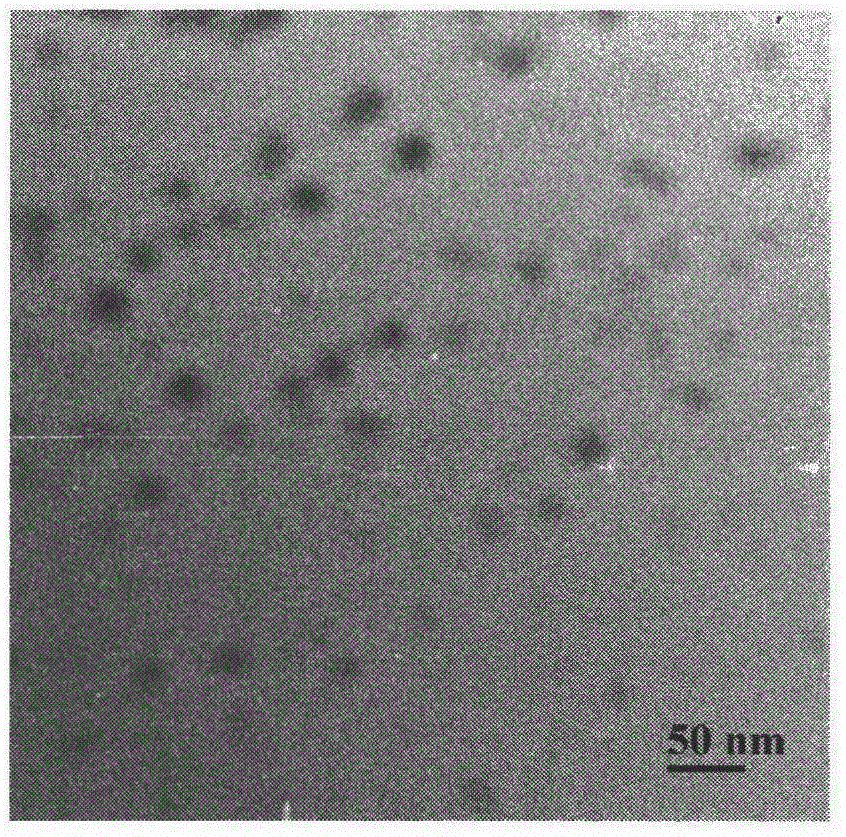Preparation method of nitrogen- and sulfur-doped fluorescence carbon dots
A technology of fluorescent carbon dots and nitrogen doping, which is applied in the field of nanomaterials, can solve the problems of cumbersome reaction process, harsh reaction conditions and high cost of raw materials, and achieves the effects of good water solubility, good optical performance and simple preparation method.
- Summary
- Abstract
- Description
- Claims
- Application Information
AI Technical Summary
Problems solved by technology
Method used
Image
Examples
Embodiment approach 1
[0017] The pomelo was crushed into a slurry with a wall breaker (45000r / min, 10min), and centrifuged (8000r / min, 10min) to get the supernatant. Take 10mL of supernatant and add 1.2g of ammonium sulfate into the reaction kettle and react at 160°C for 6h. The reaction solution was first centrifuged (10000r / min, 20min) to remove large solid particles and then filtered with a 0.22μm membrane filter. The resulting solution was dialyzed for 48 hours with a dialysis bag with a molecular weight cut-off of 3500 Da to finally obtain a carbon dot solution.
Embodiment approach 2
[0019] The pomelo was crushed into a slurry with a wall breaker (45000r / min, 10min), and centrifuged (8000r / min, 10min) to get the supernatant. Take 10mL of supernatant and add 1.6g of ammonium persulfate into the reaction kettle and react at 180°C for 18h. The reaction solution was first centrifuged (10000r / min, 20min) to remove large solid particles and then filtered with a 0.22μm membrane filter. The resulting solution was dialyzed for 48 hours with a dialysis bag with a molecular weight cut-off of 3500 Da to finally obtain a carbon dot solution.
Embodiment approach 3
[0021] The pomelo was crushed into a slurry with a wall breaker (45000r / min, 10min), and centrifuged (8000r / min, 10min) to get the supernatant. Take 10 mL of the supernatant and add 1.6 g of thioacetamide ammonium into the reaction kettle and react at 160° C. for 24 h. The reaction solution was first centrifuged (10000r / min, 20min) to remove large solid particles and then filtered with a 0.22μm membrane filter. The resulting solution was dialyzed for 48 hours with a dialysis bag with a molecular weight cut-off of 3500 Da to finally obtain a carbon dot solution.
PUM
 Login to View More
Login to View More Abstract
Description
Claims
Application Information
 Login to View More
Login to View More - R&D
- Intellectual Property
- Life Sciences
- Materials
- Tech Scout
- Unparalleled Data Quality
- Higher Quality Content
- 60% Fewer Hallucinations
Browse by: Latest US Patents, China's latest patents, Technical Efficacy Thesaurus, Application Domain, Technology Topic, Popular Technical Reports.
© 2025 PatSnap. All rights reserved.Legal|Privacy policy|Modern Slavery Act Transparency Statement|Sitemap|About US| Contact US: help@patsnap.com

